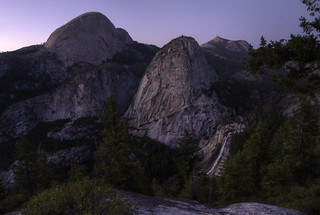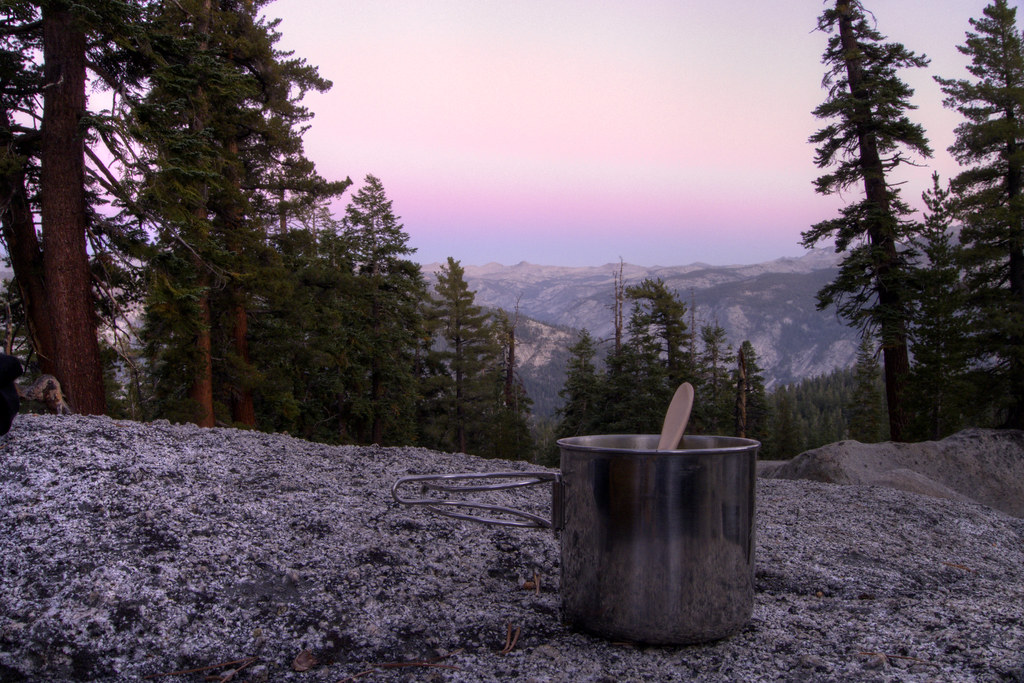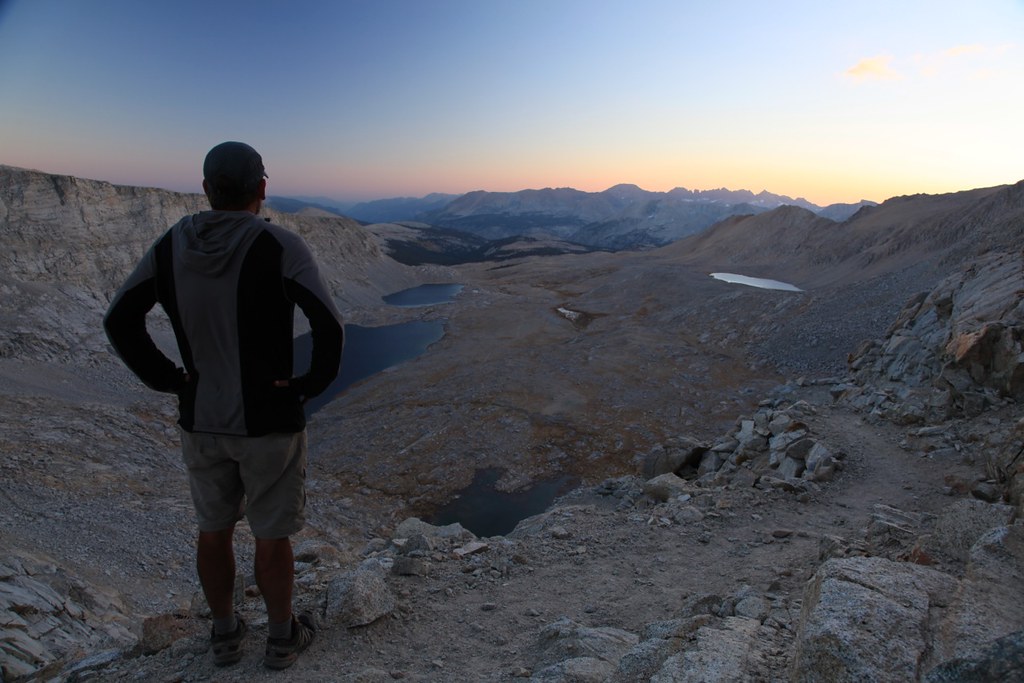 |
| (Photo: The wonderfully versatile peanut butter) |
This series on food is about long distance hiking, with the aspiring first-time thru-hiker in mind, but it will still be relevant for any multi-day hike. The main difference is that with long distance hiking, things like budgets, resupplying along the way, limited availability of items in towns, maintaining body weight, and good nutrition are more important factors to consider. On a week-long trip, I don't worry about saving a few dollars or maintaining body weight. Nor do I think as much about proper nutrition, joint inflammation, or getting burnt out on certain foods.
Part two will be a sample long-distance hiker shopping list, but before making a list, here are a few things to consider:
How many calories do you need?
For women, BMR equals:
How many calories do you need?
There are too many variables to know the exact number of calories you’ll need on a given day, such as body weight, gender, age, metabolism, pack weight, elevation gain, temperature, and hiking speed. You can, however, get an estimate of what you'll need then work from there.
“To get a rough estimate,” says Tavis Piattoly, MS, RD, LDN, Sports Dietitian and Nutrition Consultant for the New Orleans Saints. “First, determine your estimated basal metabolic rate (or BMR, the rate at which the body uses energy while at rest). For men the formula for your BMR equals:
88.362 + (6.077 x weight in lbs.) + (12.189 x height in inches) - (5.677 x age in years)
“To get a rough estimate,” says Tavis Piattoly, MS, RD, LDN, Sports Dietitian and Nutrition Consultant for the New Orleans Saints. “First, determine your estimated basal metabolic rate (or BMR, the rate at which the body uses energy while at rest). For men the formula for your BMR equals:
88.362 + (6.077 x weight in lbs.) + (12.189 x height in inches) - (5.677 x age in years)
For women, BMR equals:
447.593 + (4.194 x weight in lbs.) + (7.869 x height in inches) - (4.330 x age in years)
Body
Weight
|
||||||
Pack
Weight
|
100 lbs. | 115 lbs. |
130
lbs.
|
155
lbs.
|
180
lbs.
|
205
lbs.
|
9
lbs.
|
318 | 365 |
413
|
493
|
572
|
651
|
10
to 20 lbs.
|
341 | 392 |
443
|
528
|
613
|
698
|
21
to 42 lbs.
|
363 | 418 |
472
|
563
|
654
|
745
|
Over
42 lbs.
|
408 | 470 |
531
|
633
|
735
|
838
|
“In the beginning of your thru-hike," says Tavis "Weigh yourself every 3-7 days, if possible (early morning after going to the restroom). Measure how hungry you are every 2, 3, or 4 hours. If you’re getting hungry in 60-90 minutes after eating a meal, you either didn't eat enough or it caused a spike and crash in your blood sugar, so you would need a more stable carbohydrate: quinoa, beans, whole grain cereals, like Kashi or Shredded Wheat, or whole grain bread - anything rich in fiber.”
Features of the Best Backpacking Foods
The best backpacking foods are:
- Calorie dense
Calorie density has less to do with dehydrated food and more to do with fat content. Fat has just over 250 calories per ounce, 225% more than protein and carbohydrates. For comparison, a bag of mixed nuts has about 185 calories per ounce, a dehydrated pasta meal has about 110 per ounce. Dried fruit has about 85. Foil packages of tuna, salmon, and chicken and fresh produce have about 30 calories per ounce.
With a 6,000-calorie diet, if you ate a very low-fat trail diet of fish and fresh produce, you’d need to carry 90 pounds for a week on the trail. If you choose high-fat calorie-dense foods, you can get that down to about 16 - 19 lbs. Although I've never met a backpacker attempt the former, you can see how food selection can make a huge difference in your pack weight.
- Easy to prepare with minimal cooking supplies
That way there's no need to carry more than a stove, cook pot, fuel, and spoon. I've gone on many backpacking trips without cooking supplies, but on a long distance hike, the ability to cook will increase your food options and make it easier to have a more healthful varied diet.
Campfires can save weight by eliminating the need to carry a stove and fuel, but they can't always be relied on due to rain or fire bans. If you're planning for campfires, be sure you have plenty of foods that do not require cooking for those rainy days.
- Highly Nutritious
With the food limitations of long-distance hiking, namely the lack of refrigeration, access to fresh produce, and the need for calorie dense/high-fat foods, it’s very easy to become deficient in a variety of vitamins and minerals over time. Additionally, it's very important to reduce saturated fat and sugar intake. It's tempting to pack a lot of cheap, high-saturated fat and high-calorie junk foods, but too much can lead to increased inflammation and sluggishness. Constant soreness and lack of energy have sent a lot of would-be thru-hikers home before finishing their goal.
- Non-perishable
Lack of refrigeration makes it more difficult to eat a healthy varied diet on the trail, and the need for non-perishable foods is obvious. Some perishable foods, however, can last a few hours or days without refrigeration. Hard cheeses like Parmesan and Romano will last for days if kept sealed well. Individually wrapped cheeses, like string cheese, also pack well.
A lot of produce, although heavy calories, will pack out well: potatoes, sweet potatoes, onions, cucumbers, squashes, garlic, apples, avocados, hot peppers, and carrots, for example. Also, pick up a bag of complete ready-made salad for your first night's dinner after a resupply.
Bacon, which makes all things better, is available pre-cooked at most grocery stores. Farm-fresh eggs, which have not been previously refrigerated, can keep for several days at or below 68°F. (Once refrigerated in a grocery store, however, eggs should stay refrigerated due to the “sweating” on the shell that happens from the sudden change in temperature. This can lead to bacterial growth.)
And don't forget the world is your refrigerator when it’s below 40° F. When it’s cold enough outside, your food options open up considerable, like milk, eggs, meats, cheeses, and butter. As with most perishable foods, keep them stored in the center of your pack to keep them a little cooler and avoid body heat and seal them well after opening.
- Appetizing
It may seem obvious, but on a long distance hike you’ll probably get tired of even your favorite foods eventually. This is the main reason I buy my food along the way and avoid preparing mail drops before a trip and shipping them to myself along the trail. What sounds good before a trip, may make you dread dinner at the end of your day months later. You want to crave the foods you carry. It will help morale and ensure you’re going to eat enough calories to maintain body weight.
- Inexpensive
Believe it or not, people who hike for several months out of the year (rather than working) are usually on a tight budget. Some of the cheapest calories on my list are: lentils, ramen noodles, whole-wheat pasta, oatmeal, Pop Tarts, peanut butter, and olive oil. All are less than $1 per 1,000 calories and lentils are as cheap as 26¢ per 1,000 calories. For a comparison, Mountain House or other brands of pre-packaged meals, run over $12 per 1,000 calories. Beef jerky costs about the same. Foil packets of tuna and salmon, about $20 per 1,000 calories.
Hiking with a group can save you a lot of money by allowing you to buy in bulk and separate the food into individual zip-top bags. If you prefer to hike alone, try to find other hikers heading to town around the same time as you. Ask if they want to share the cost of bulk foods and slow down or increase your hiking speed to ensure you get to town the same time as them.
If you're not with a group, buying in bulk can still save you money without carrying more food weight, if you carry versatile ingredients that can be prepared in multiple ways.
- Versatile
Buy ingredients that can be prepared in multiple ways and with varying cook times, like pasta, oatmeal, crackers, cheese, and peanut butter. Have some meals that don't need to be cooked at all and save them for nights when you don’t have the time or simply aren't in the mood to cook. This is especially important when you run out of fuel or fire bans or rain prevent you from building a campfire.
I'll have more details in the next post, but as an example, whole-wheat pasta, oatmeal, peanuts, peanut butter, and olive oil fit in all of the above categories. For example, combine two servings each of cooked whole-wheat pasta, crunchy peanut butter, and olive oil, and you have one of my favorite backpacking meals, Peanut Butter Noodles. (Add salt or a packet of soy sauce to taste.) It has 1040 calories (145 per pre-cooked ounce), 96 grams of carbohydrates, 64 g of fat, 30 grams of protein, 14 grams of fiber, and costs just $0.86. That’s not much more per calorie, than even ramen noodles and much healthier too. In other words, with a little creativity, you can eat for a whole day for the cost of one pre-packaged freeze-dried meal.
These ingredients are also versatile and can be used in a number of ways. Swap out the peanut butter for 1/4 cup of Parmesan cheese and instead use the peanut butter in your morning oatmeal. In your oatmeal, mix a couple tablespoons of whey protein, cocoa drink mix (such as Ovaltine), or powdered whole milk to add additional vitamins, nutrients, calories, protein, and fat. You could also save the peanut butter to spread on whole-wheat tortillas for lunch and instead add nuts and/or dried fruit to your oatmeal. The Ovaltine and powdered milk can also be used for cold chocolate milk or hot cocoa, or use them to turn your instant coffee into a mocha.
That is all for now. I will post more food ideas in part two. Thanks for reading!
-RG
Related Articles:
Nutrition for Thru-hikers: An Interview with Sports Dietitian, Tavis Piattoly
Cooking Supplies and How to Make an Alcohol Stove
- - - = = = - - -
Tavis Piattoly, MS, RD, LDN is the Sports Dietitian and Nutrition Consultant for the New Orleans Saints, New Orleans Hornets, and the Tulane University Athletic Department where he coordinates nutritional assessments, provides nutrition education, and develops individual meal plans for athletes to improve their health, performance, and recovery. In addition, he consults for numerous high schools athletic programs throughout the state of Louisiana. Futhermore, Tavis worked closely with Roy Jones Jr. and Bernard Hopkins to help them retain their boxing titles and has been working with Lance Berkman since 2011.
He is also the co-founder and Director of Sports Nutrition education for My Sports Dietitian (www.mysportsd.com), an online sports nutrition education company to help High School and College Athletes improve their eating habits to enhance performance, recovery, and health through the guidance of a Licensed Sports Dietitian.
Tavis obtained a Master’s of Science Degree in Exercise Physiology from Louisiana State University and a Bachelors of Science Degree in Nutrition and Dietetics from Louisiana State University. He is a registered and licensed Dietitian/Nutritionist. In addition, he serves on the Louisiana High School Athletic Association Sports Medicine Advisory Board.


com-s.jpg)
com-s.jpg)
com-s.jpg)
com-s.jpg)


